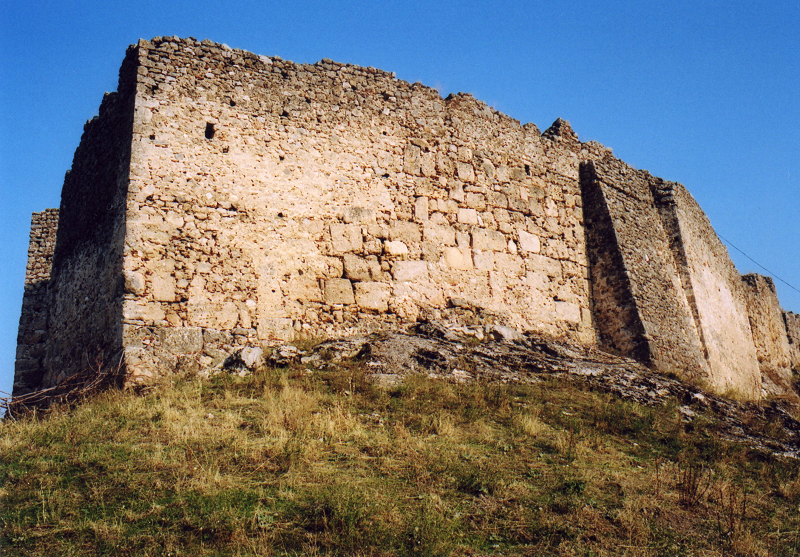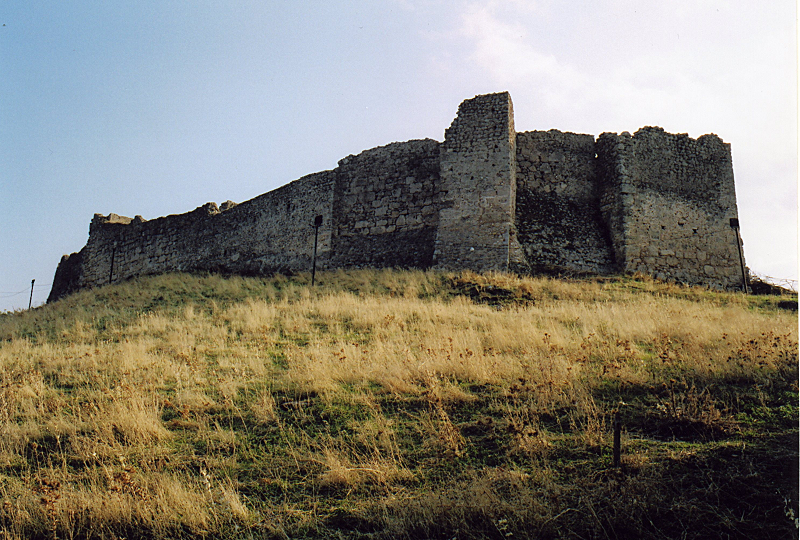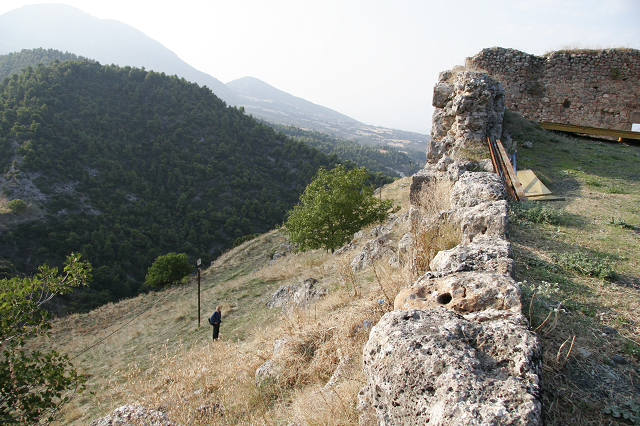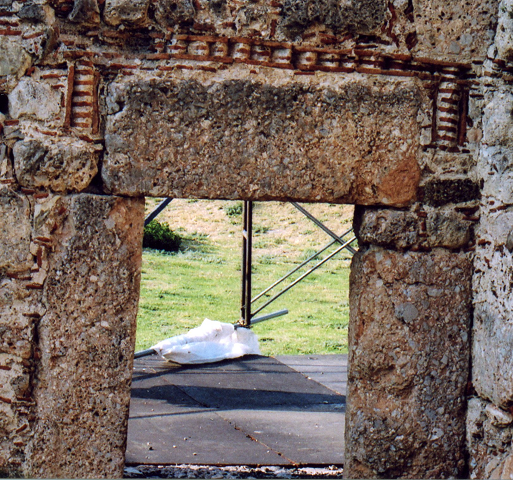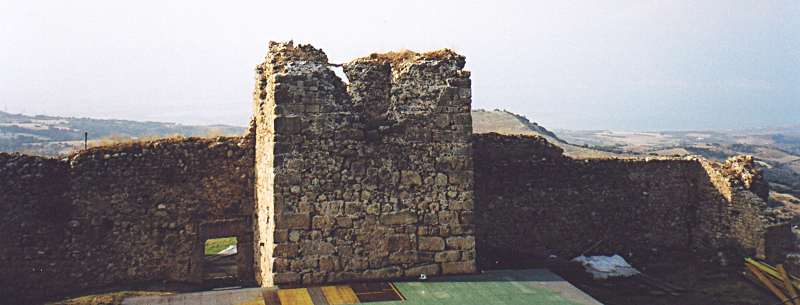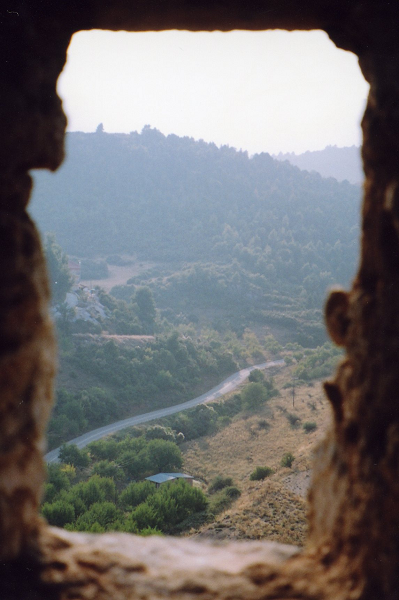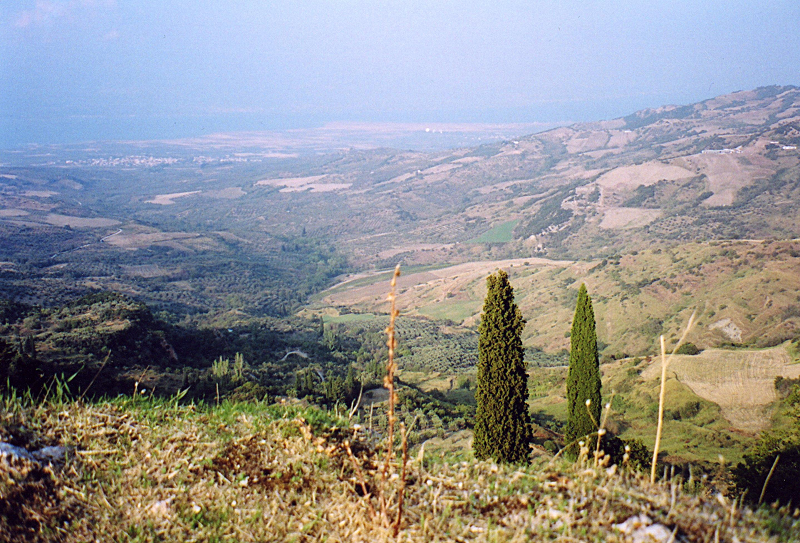sections
The main keep at Boudonitsa, showing reuse of monolithic stones, from the S.W. Its bigger than it looks here...
History/Description:
'of all the feudal lordships founded in Northern Greece at the time of the conquest, the most important and most enduring was the Marquisate of Boudonitza ... the lords of Boudonitza were Marquesses in the literal sense of the term - wardens of the Greek Marches ... What stranger accident could there have been than that which made two noble Italian families the successive guardians of the historic pass that is forever associated with the death of Leonidas?.' (Miller) [13]
Boniface of Montferat (Latin King of Thessalonica) created the fief of Boudonitsa and gave it to Guy Pallavicini soon after the capture of Constantinople in 1204: the castle must have been built shortly after. It proved to be a good investment. Sited near the pass of Thermopylae it was a significant element in the defence of the Frankish possessions, forming part of the northern defences of the lordship of Athens and Thebes. The Despot of Epirus, Theodore I Komnenos Doukas conquered Thessalonica in 1224, but Guy held the castle against him; around 1250, the Emperor of Nicaea, John III Doukas Vatatzes was campaigning in the region and was resisted; Ubertino Pallavicini was on the right side in 1257 when William Villehardouin was defeated by the Byzantines; and whilst Alberto Pallavicini, lord of Boudonitsa was among those slaughtered by the Catalans at the battle near Halmyros, his widow Maria de Verona seems to have dodged being married off to one of the victors - she married instead Andrea Cornaro, lord of Karpathos, and kept her castle. A daughter, Guglielma, married first Bartolomeo Zacharia and then in 1335 Niccolo Giorgio (or Zorza). Their son, Francesco, inherited the lordship. By the 1390's (if Miller is correct) the castle was tributary to the Turks and in 1410 the Ottomans attacked, killed the lord of Bodonitsa and finally took the castle (had help promised by Venice arrived it might have survived). The final fate of the marquisate is apparently unclear. Niccolo Giorgi had been carried off captive when the castle fell, but in 1416 the castle was returned to him as part of a treaty between the Ottomans and Venice, and he lived long enough to cede it to an uncle, before it was finally abandoned by this succession of doughty Italians. The title was still claimed into the 1470's. The castle was used both in the War of Independence and World War 2, when the area was reputedly a stronghold of ELAS.
Miller reckons there was a triple enciente here originally, but its hard to see now, and notes that the lords of Boudonitsa could have seen Stylidia (the port of Lamia), the Gulf of Volos, Skiathos, Skopelos, and the Northernmost of the Euboean baronies, and the Atalante channel from the castle, together with Skiathos and Skopelos; and that it had a landing place on the coast, about three and a half hours from the castle by horse.
Directions: You can park in the village of Mendenitsa, which is partly built on the old ramparts. In 2006 it was partially obscured by a stage and seating currently on the S.E side.
Sources: [04, 13]
View of the keep from the N.E.
View from the keep.
Re-use of monolithic stones to make a doorway, with an effort at decoration with tiles.
Part of the keep.
View from the keep, which is set atop a steep hill
View from the keep towards Thermopylae and Malaikos Gulf near Lamia
back to homepage
Unless otherwise stated, the text, images and design of this site are (c) the author. This page last updated 7 Jan 2007
